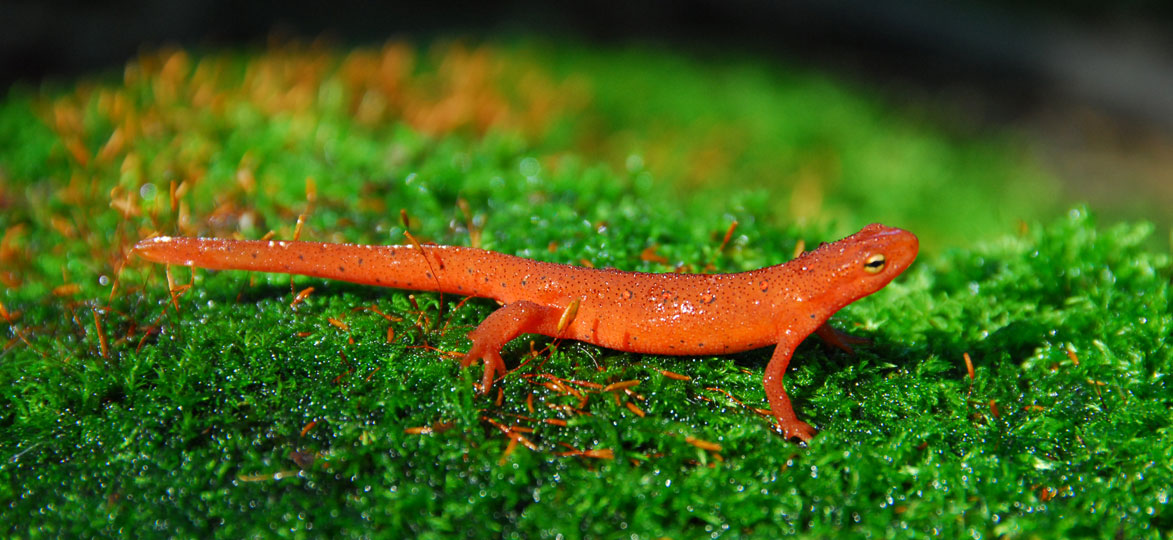
The Eastern Newt (Notophthalmus viridescens) as a juvenile is reddish-orange with slightly bumpy skin. As an adult, the Eastern Newt turns olive green and their bellies reveal scattered black spots on a bright yellow background. They reach 5 inches in length. Juveniles and adults both have a dark horizontal line going through their eyes and rows of red spots outlined in black along their backs.
Habitat
The juveniles, called Red Efts, live on land for up to eight years. As an adult they return to the permanent water of beaver ponds, small lakes, man-made ponds, or marshes, where they breed and lay their eggs individually on underwater vegetation.
Reproduction
Breeding happens in water, and the breeding season begins in late winter and lasts until early spring; at this time, the female is heavy with eggs and actively seeking a male.
Females are attracted by the male's spots and he lures them to him by making fanning motions with his tail and wiggling, causing an enticing odor (a pheromone) to be released. Males will deposit a sperm packet on the bottom of the pond and the female will proceed to pick it up with her cloaca, later using the sperm to fertilize her eggs.
Female lay a few eggs each day, scattering them wildly. They lay between 200 and 400 single, jelly-covered eggs on submerged vegetation, each season. As soon as the process is finished, the female newt swims away leaving her eggs to survive on their own. Both males and females reach sexual maturity around the age of 3.
Diet
The aquatic larvae eat small invertebrates including insect larvae and fleas. Terrestrial efts eat small invertebrates, such as snails, spring tails, and soil mites. Adult newts eat mainly midge larva and other aquatic immature stages of insects. Adults don't have a specialized diet, eating any small invertebrate that they can find
Management
During the past few decades, more has been learned about salamander populations and their natural histories in Vermont. A reptile and amphibian atlas project initiated in 1995 has provided more information on the distribution of Vermont's salamanders.
Biological inventory of wildlife and natural communities is helping identify important habitats and vulnerable populations of salamanders in order to include these in conservation planning efforts. A study of vernal pools is providing information on habitat characteristics that are important for salamander breeding.
Large-scale land conservation projects, such as the addition to public lands in the Nulhegan River Basin, are helping to ensure the continued existence of salamanders in Vermont's landscape. Environmental legislation also helps sustain vulnerable species of salamanders by protecting their critical habitats.
Status
The Eastern Newt is fairly common almost statewide but requires large mosaics of interconnected hardwoods and wetlands.
